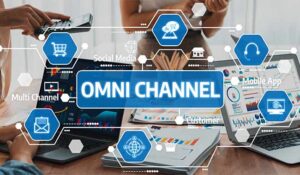Andrew White at Contexta360 explains that the journey from single channel to multichannel to omnichannel is worth it, but there are many invisible factors that organisations are not aware of, and they therefore do not consider when planning the journey.
It is generally viewed as positive and progressive for organisations to contemplate the move from one state to the next. It is not a linearly complex move, but it should be considered extremely carefully to ensure the return on investment is realised.
Of course, the rewards are there if it is executed well, but many organisations fall into traps that become costly to them, not only in technology and integrations, but more importantly in service, CX, and sales revenues.
In reality, we can simplify the equation by removing the ‘single channel’ permutation. Today, most organisations have websites, email, phone and, more recently, video. It is safe to say that multichannel has become the norm. The question is, do we go full omnichannel?
The equation then becomes quite simple:
- What does this cost?
- What does this deliver?
This is an exciting subject and one that has been with us for many years, but the vast majority have not made the leap. The sad fact is that those who have, have either knowingly or unknowingly failed in its execution.
Why is this? Simple mathematics. The permutations and complexities increase exponentially. To explain this more, let’s start at the beginning of the customer journey.
Why is your customer or prospect contacting you? There are a billion reasons why. If we simplify it, we could say: to enquire, to buy, to action, i.e. move money or return a product, or to complain. There are more, but these cover the main bases.
Next, how do we connect to the service to solve the customer’s need, i.e. the channels of communication, the connection? There’s no great surprise here either, with those being web, app, phone, email, chat, video and social.
At the end of this connection is the actual service, but first we need to decide if the service should be automated, self-service or human. This may be dynamic and based on many internal and external elements, including time, availability of resources, skills, product, customer type and sales stage.
Now, this is where things start to get interesting and where the invisible infrastructure comes into play. Many organisations plan extensively around the physical cloud or hybrid or on-prem technologies. They select a box of call control and a cloud of IVR and a crate of web with a pallet of chatbot and a side order of FAQs, for example.
The invisible infrastructure contains elements such as policies, process, brand, EQ, knowledge and content. Furthermore, how is this structured? Are these distributed in each sub-system, federated, integrated and so on?
The final step is the scenario in which a customer journey starts with one channel and in one service format, for example voice channel and automated IVR, but moves to either another channel or a different service delivery.
When we do the maths, we may say the complexity is now not just 5X channels, but, 5X channels x 3X service delivery x 3X types per service delivery x 100 policies x 10,000 knowledge paths x any quality standards. Plus, the products, services and policies may all change tomorrow.
The bottom line is that this is a massively complex equation, not so much from a technology perspective but for the organisation. To adapt the words of Sun Tsu in The Art of War: “If you are going to battle, ensure you know your customer and yourself well.”
We regularly find organisations know their customer better than they know themselves. More than 80 per cent of customer frustration doesn’t come from the agent or individual, but from a broken process, missing knowledge or just the sheer friction and pain of answering one of the four reasons for the call, chat, email – I want to buy, I want to ask a question, I want to return, I want to complain.
Knowing why your customer is calling is key. Having conversational intelligence along the customer journey is more important than the metadata of which channel they used. Conversational intelligence captures what was said – the topics, the intent, the actions – and this can be fully analysed.
Monitoring chat, voice, video through IVR, chat servers and call centre agents is critical if you are embarking on an omnichannel strategy. It is a path towards exceptional CX, C-sat, sales and cost-reduction prizes, but it is also a path that is littered with traps and dead ends, some of which are visible and some invisible.
Frost & Sullivan define omnichannel as: “Seamless and effortless, high-quality customer experiences that occur within and between contact centre channels.”
Adding conversational intelligence to the omnichannel stack will bring the invisible aspects of the customer journey to the surface and make the customer experience seamless and effortless.
Author: Guest Author
Published On: 13th Aug 2021 - Last modified: 6th Sep 2024
Read more about - Guest Blogs, Andrew White, Contexta360















